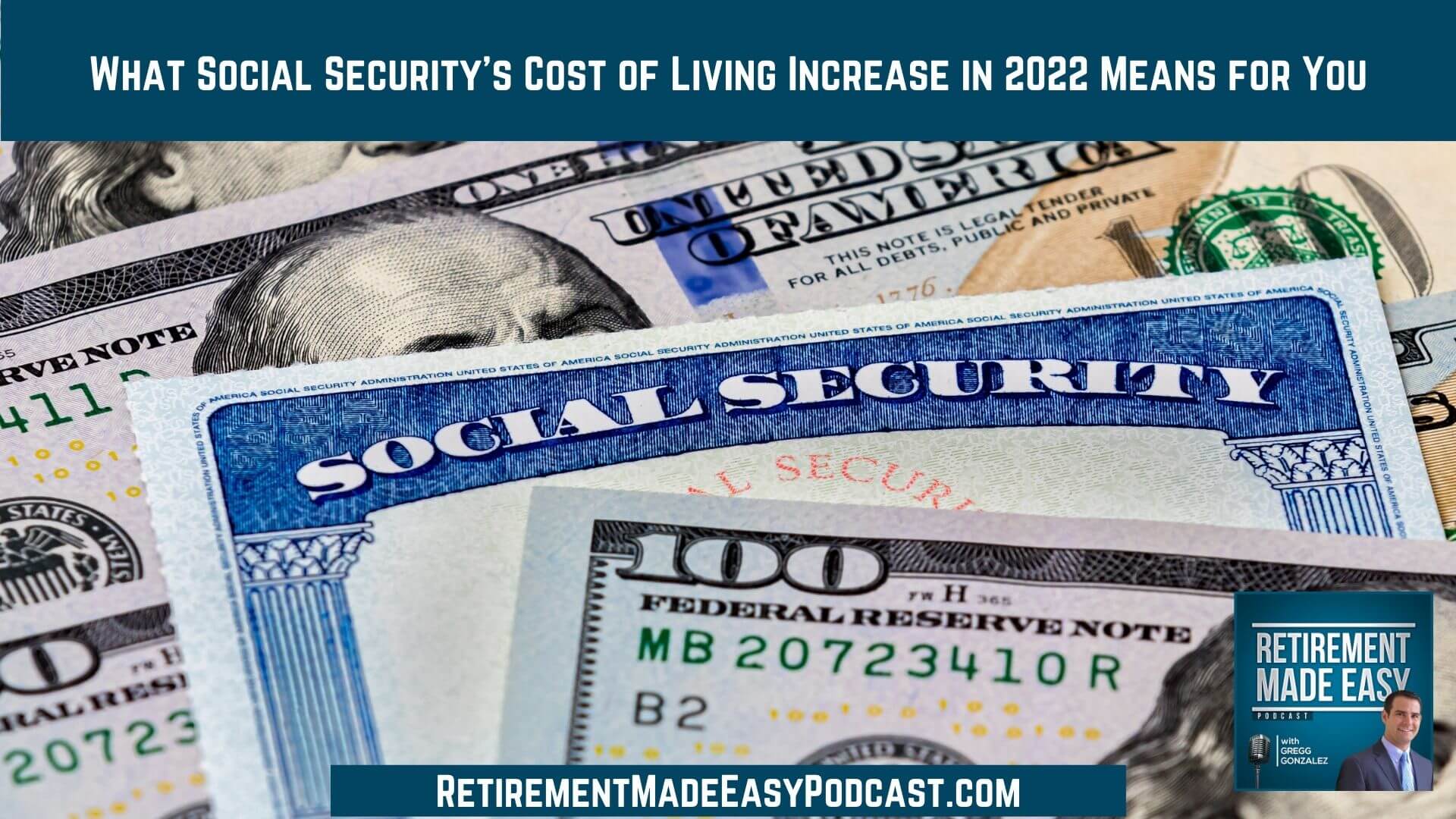
What Social Security’s Cost of Living Increase in 2022 Means for You, Ep #69
The cost of living for 2022 will be the highest it’s been in 40 years. What does that say about inflation? What is the increase of social security payments? How will it impact Medicare Part B premiums? I’ll cover what these changes mean for you in this episode of the Retirement Made Easy podcast!
You will want to hear this episode if you are interested in…
- [3:52] The social security cost of living increase announcement
- [7:30] The Medicare Part B premium is taken from your social security benefit
- [11:36] Why the social security system is broken
- [14:30] Listener question: how to protect your retirement money
Social security’s cost of living increase announcement
Every year around mid-October, the Social Security Administration announces whether or not there will be a cost of living increase for the next year. In three of the last 12 years, there was no increase. But starting January 2022, social security payments will increase 5.9%. That’s the largest increase in over 40 years.
The greatest risk retirees face is that the cost of living is constantly increasing. Anyone who doesn’t account for that—such as those with a fixed pension—may struggle to pay for basic necessities. It’s given that if you’re planning for a 30-year retirement, you’ll run into higher costs of living. Social security will give you a “raise” some years and others they won’t.
The Medicare Part B premium is taken from your social security benefit
If you weren’t already aware, the Medicare Part B premium comes out of your social security benefit. In 2021, the Part B premium—depending on your tax bracket—is $148.50. If you’re expecting $2,000 a month from social security, you have to reduce it by the amount of your Medicare Part B premium. Don’t let it surprise you!
In November, Medicare will officially announce what the premium will rise to in 2022. It’s expected to be about a $10 per month increase from $148.50 to $158.50. Why does this matter? It will offset the raise you get from social security.
If you get $1,000 a month from social security and the cost of living will increase 5.9%, you’ll get $1,059 a month. If you reduce it by the cost of medicare, your benefit will be $1,049 a month. It will be closer to a 4.9% increase in your social security benefit. In the years you don’t get a social security increase, your benefit will go down because your Part B premium will likely increase.
Why the social security system is broken
Before the cost of living adjustment in 2021, the average social security recipient receives about $1,565. A 5.9% increase will bump that to $1,657, an increase of $92 a month. Once you adjust for the Medicare part B premium increase, that bumps your increase down to $82.
More than 70 million Americans receive social security income. We don’t have enough people paying into social security to compensate for these yearly increases. By 2035, 2.3 people will pay in for every one recipient. Something needs to change in the system to make sure the system remains solvent.
Bonus listener question: How to protect your retirement money
A long-time listener, Joyce, is on the verge of retiring. She’s worried taxes will increase. She has a 401k and her husband has a 403B. How do they protect what they’ve accumulated when the market is volatile?
Generally speaking, you need to make sure your portfolio matches your retirement goals and your risk tolerance. Are you conservative? It won’t earn you much interest. If your cost of living is increasing 3% or more per year and your money is in a CD at the bank earning next to nothing, you’ll be behind. If the cost of living will continue to increase—and we know it will—it’s prudent to make sure your investments are keeping up (without being too aggressive).
But there’s more to the story—listen to the whole episode to hear my entire answer for Joyce!
Connect With Gregg Gonzalez
- Email at: Gregg@RetireSTL.com
- Podcast: https://RetirementMadeEasyPodcast.com
- Website: https://StLouisFinancialAdvisor.com
- Follow Gregg on LinkedIn
- Follow Gregg on Facebook
- Follow Gregg on YouTube



